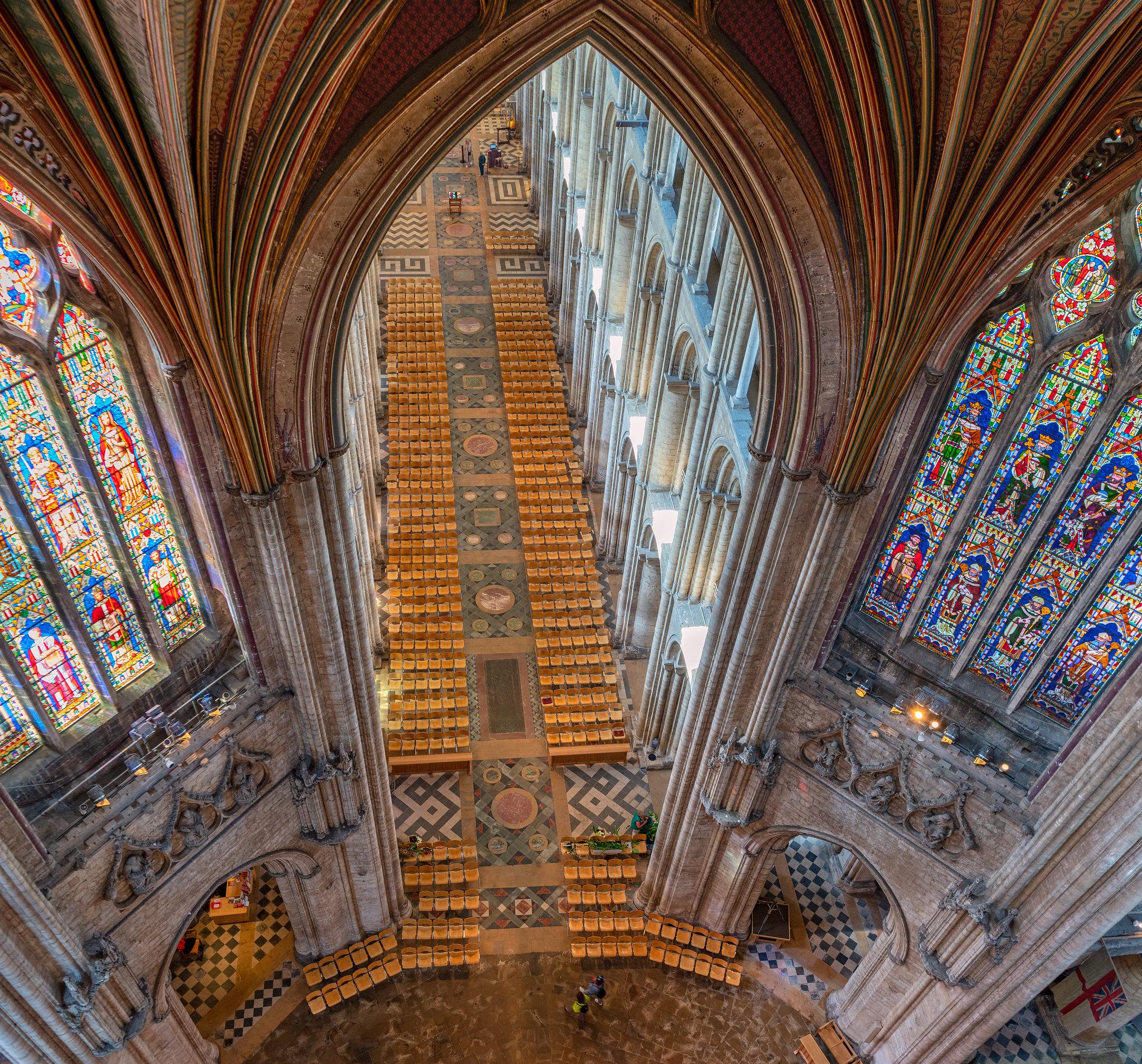St Andrew
Soham,
A magnificent medieval church boasting carved angels and tie beam roof; Olaudah Equiano, former slave and prominent abolitionist got married here in 1792.

Queen Etheldreda was foundress and abbess of Ely and it was here that she restored an old church and built her monastery.
Ely, Cambridgeshire
After its restoration in 970 by Ethelwold, it became the richest abbey in England except for Glastonbury. Etheldreda died around 680 from a tumour on the neck, reputedly as a divine punishment for wearing necklaces in her younger days; in reality it was the result of plague. Etheldreda's shrine is visited by vast numbers of medieval pilgrims.
No trace now remains of the Anglo Saxon monastery founded in 673 and refounded in 970. After the Norman Conquest in 1066, and the putting down of the local rebellion of Hereward the Wake immediately after, the first Norman Abbot began to rebuild the Abbey on a new and larger scale. Parts of the cathedral belong to these years, but the buildings of the monastery you can now see were all additions later in the Middle Ages.
The oldest buildings are the prior's house with its vaulted undercroft, and the central part of the infirmary complex, both built in the 12th century. The infirmary was a long rectangular building with a high roof over its central hall. The hall has lost its roof and is now a road called Firmary Lane. At the end of the lane the sanctuary of the chapel stands within the 19th century brick building which forms part of the Chapter House.
By the end of the 13th century the cathedral and its monastic buildings were largely complete, and included the Almonry of the east side of the north range, the Great Guest Hall for lay visitors and the Black Hostelry for visiting Benedictine monks.
Major works began again in 1321, with the commencement of the Lady Chapel, and accelerated after the collapse of the central tower of the cathedral in 1322. During the next 30 years the octagon was built, the Lady Chapel was finished, and some of the monastic buildings were substantially altered.
Towards the end of the 14th century a monastic barn was built to store crops, next to a new gatehouse.
In 1539 the monastery was dissolved by Henry VIII. The bishopric remained, and the bishop continued to live in the medieval bishop's palace until the early 20th century. The houses of the monks around the cloister were now surplus, and have largely vanished. In 1541 a College of secular priests was established by Royal Charter. The Dean, successor to the Prior, took over some of the guest halls and prior's buildings, and so these still survive.
Soham,
A magnificent medieval church boasting carved angels and tie beam roof; Olaudah Equiano, former slave and prominent abolitionist got married here in 1792.
Sutton in the Isle, Cambridgeshire
There are strong echoes of the famous octagon of nearby Ely Cathedral in the silhouette of St Andrew's, proudly set on its ridge and visible for miles across the Fens.
Landwade, Suffolk
The church of St Nicholas is privately owned and falls in the grounds of Landwade Hall.